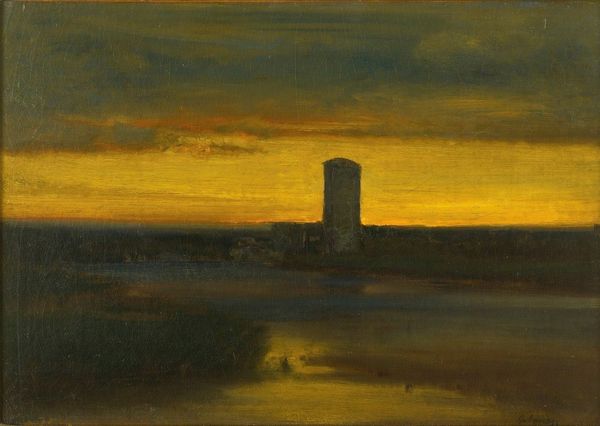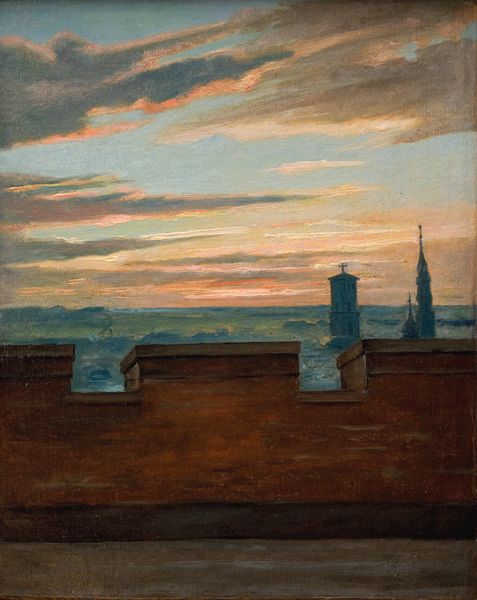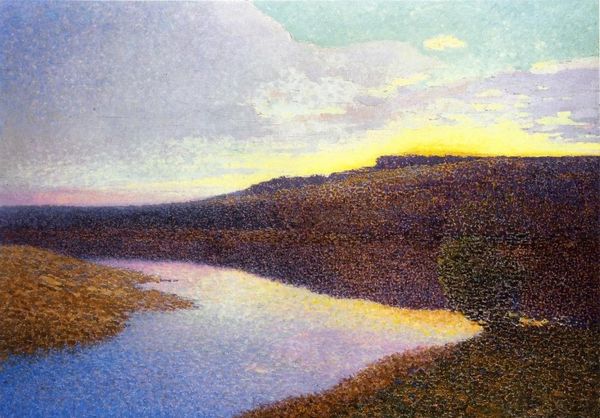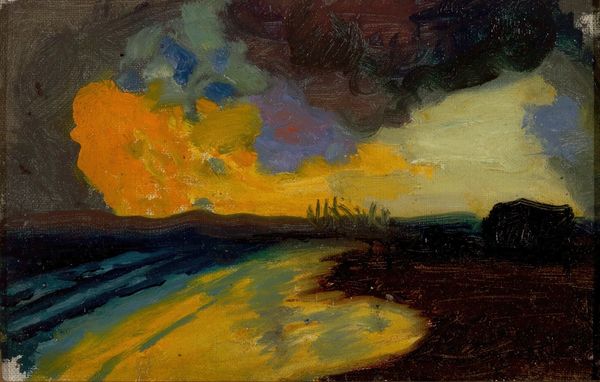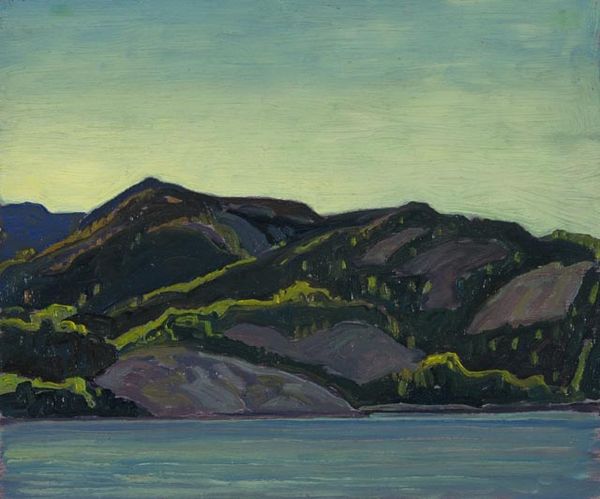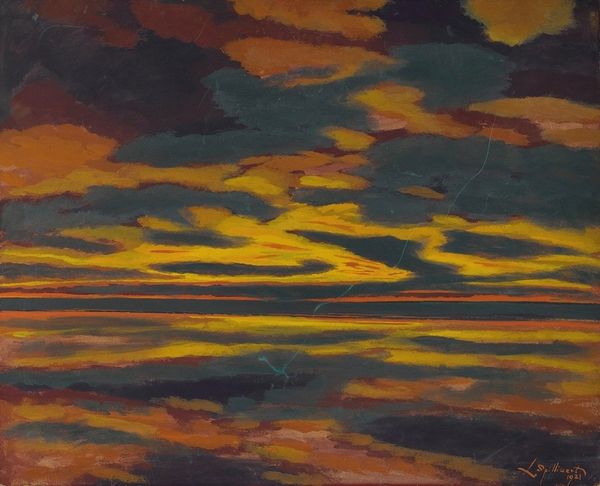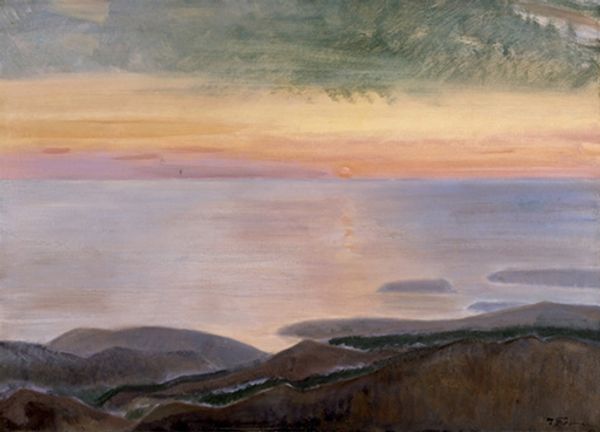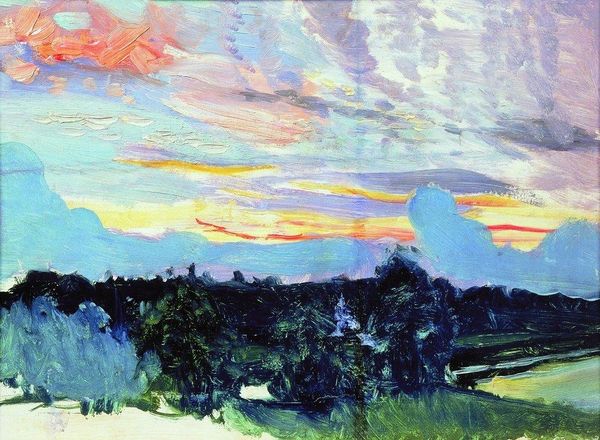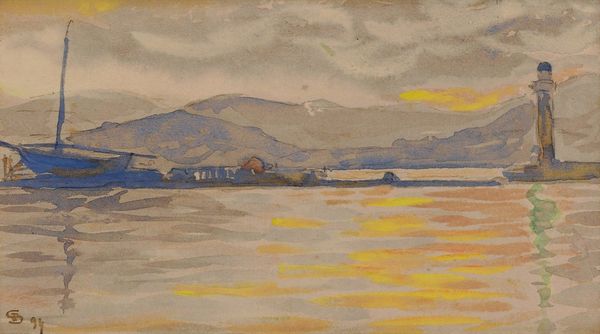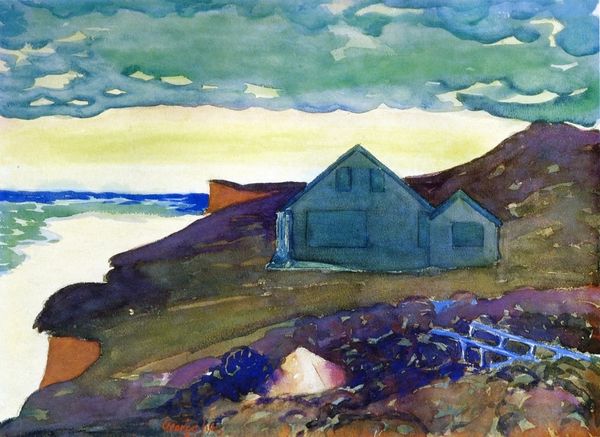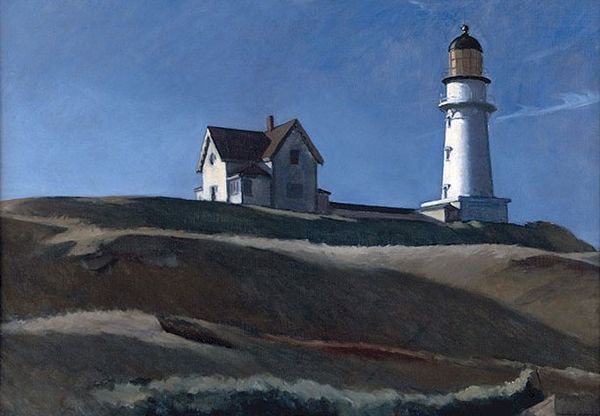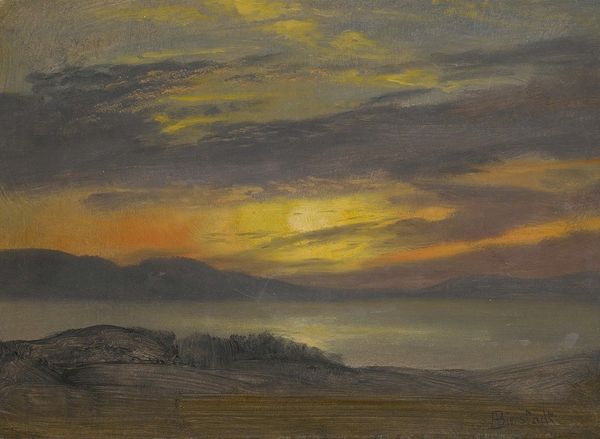
painting, oil-paint
#
sky
#
painting
#
oil-paint
#
landscape
#
house
#
impressionist landscape
#
oil painting
#
cloud
#
ashcan-school
#
cityscape
#
modernism
#
realism
#
building
Dimensions: 121.9 x 74.3 cm
Copyright: Edward Hopper,Fair Use
Editor: So here we have Edward Hopper's "Railroad Sunset," painted in 1929, an oil painting currently residing at the Whitney. I find the composition so striking - this strong vertical element of the signal tower set against that expansive horizontal sunset...it almost feels like a stage set. What's your take on it? Curator: I see a powerful visual statement about the changing American landscape and the pervasive influence of industrialization on everyday life. Hopper painted this during a period of rapid modernization. These railroad tracks were arteries pumping life and materials across the nation. The signal tower, isolated as it is, could represent humanity's control of this power, but the looming darkness suggests something more ambivalent. Editor: Ambivalent in what way? Curator: The Ashcan School, to which Hopper is often connected, embraced realism but also critically examined the social impact of urbanization. The beauty of the sunset is undeniable, but that stark tower also symbolizes the encroachment of industry and technology. Look at the stark contrast between the glowing sky and the tower's silhouetted form, the dark rigid architecture, it's almost ominous. Where does this sit within debates about American identity during that period? Editor: So it's less a celebration of progress and more a questioning of its costs? It certainly makes you wonder about the figures not seen in the painting and invites reflection. Curator: Exactly! It captures a specific historical moment, prompting us to consider the role of railroads in shaping both the physical and the social terrain of America. That yellow, how do you see that tone and feeling related? What impact has railroads and their architecture left behind? Editor: Now I understand the power dynamic a little bit more clearly between the industry and the serenity it interrupts! It's more complicated than I thought at first. Curator: Precisely. Art can serve as a time capsule, reflecting the sociopolitical landscape of the era.
Comments
No comments
Be the first to comment and join the conversation on the ultimate creative platform.
